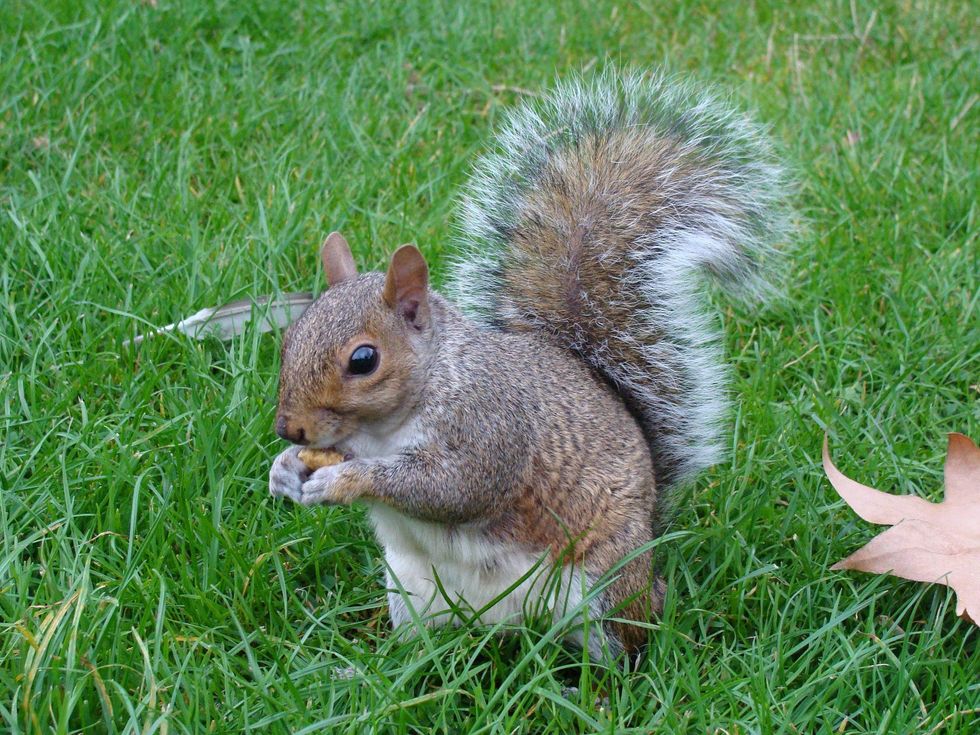You look out the back window and see the usual squirrel scattering up a tree and onto the fence. It pauses, tail waving; it moves and stops, tail again flicking furiously. The darned thing just won’t stop moving.
Besides the fact that squirrels have high metabolisms, why do they wave their tales so much? I wonder this all the time, as our backyard is a regular habitat for squirrels and every time I see one he’s almost always flicking his tail. Perhaps you’ve wondered why as well.
Well, wonder no more, people.
According to this article in the San Jose Mercury News, squirrels flick their tails as a form of communication, specifically when they are suspicious or think there may be danger ahead. The waving tail is a warning: Yo Fred, I think there’s something up there. It also alerts the predator that the squirrel sees him: Hey giant cat, I SEE YOU.
So the squirrels in our backyard must be really suspicious a lot of time, because they wave their tails all the time. Nearly non-stop. This makes sense, however, because we do have a lot of cats running around. The poor squirrels are in a near-constant state of alarm, then.
Or maybe not. According to Thaddeus McRae and Steven Green, authors of a study on squirrels published in Behavior, squirrels have two types of tail movements: one is the twitch, a long, flowing, arc-like movement which is likely the one I see all the time; the other is the flag, where the tail moves much quicker and in shorter, jerkier movements from circles to squiggles. (See this article from Wired to watch a five-second video of a flag.) McRae and Green found that flags were used more often for specific predators, like cats, and that twitches were used in many different situations including those where no predator was present.
So maybe the squirrels in my backyard aren’t so uptight after all. They’re certainly communicating, but maybe they’re just alert for any threats.
See the rest of the Wired article to read more about the various squirrel alarm calls. It’s pretty interesting.






 The minimum wage is not a living wage.
StableDiffusion
The minimum wage is not a living wage.
StableDiffusion
 influential nations
StableDiffusion
influential nations
StableDiffusion












